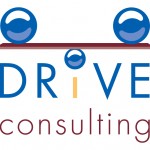 May 27, 2011 – In my last blog posting I recalled a recent meeting where I mentioned some of the research and work I’m doing on engagement and the response from the other side of the table was a smile and the words “that’s a happy topic.” Knowing what was understood and implied, I quickly set the record straight. The engagement I refer to is not the romantic kind; but rather the more encompassing engagement in life and specifically in the workplace. Of course, the secrets and skills of achieving full engagement are readily transferable from the workplace to all other areas of life, including the romantic.
May 27, 2011 – In my last blog posting I recalled a recent meeting where I mentioned some of the research and work I’m doing on engagement and the response from the other side of the table was a smile and the words “that’s a happy topic.” Knowing what was understood and implied, I quickly set the record straight. The engagement I refer to is not the romantic kind; but rather the more encompassing engagement in life and specifically in the workplace. Of course, the secrets and skills of achieving full engagement are readily transferable from the workplace to all other areas of life, including the romantic.
There are numerous studies, by the Gallup organization and others, showing how an engaged workforce is more productive and more successful. Motivation is one of the main indices of engagement. A motivated individual exhibits high levels of engagement in his pursuits. A motivated workforce exhibits full engagement at work and furthers the organization’s strategies to achieve the organization’s stated goals. How is motivation enhanced and how is engagement achieved?
To begin answering this question, we should discuss the difference between extrinsic motivation and intrinsic motivation. Extrinsic motivation exists when, as its name implies, the motivating factor is external to the person, when the motivating force is from without. Intrinsic motivation, on the other hand, exists when the person understands and accepts the desirableness of the action, when the motivating factor is from within. According to Edward Deci’s research, detailed in his book Why We Do What We Do, moving from extrinsic motivation to intrinsic motivation is the primary element in increasing productivity and engagement. (See also, Drive by Daniel Pink.) The epitomic example of extrinsic motivation is the carrot and stick approach. Offering a reward for a desired behavior or result, the carrot, more often than not doesn’t accomplish the real result. The reward might motivate the person to perform as requested; however the continuing of that behavior is usually tied to the continuing of the reward. Stop giving the gold star and the child stops getting A’s on tests. More insidious is the loss of internal desire to do the action – in the case above, the desire to learn. Deci’s research has shown that offering a reward for an action has the result of removing pleasure from the action, even in activities which previously were enjoyed. The action becomes work, a job, and tied to the reward. And often the fear of the punishment, the stick, merely results in the person feeling trapped and disengaged. As such, offering rewards (higher pay, promotions and the like) or threatening punishment (firing or demotions) to others, becomes a form of coercion and over time has the reverse effect of the original intention. Engagement is dulled rather than enhanced.
How can the theses insidious effects of extrinsic motivation be reversed? First and foremost create the sense that people have control and can choose to engage in the activity. That they are not being coerced. As we’ve illustrated, coercion comes in many forms, some of which are seemingly benign yet on examination often have a controlling element and intent. The power of choice is the key. Create autonomy in the workplace by presenting people with a choice of what to do or how to do it and they will rise to the challenge and succeed. Competence can then be developed and intrinsic motivation enhanced which will then result in increased productivity and engagement.
In short, to encourage engagement, offer a choice; to become fully engaged, believe that you have a choice in what you are doing.
The age old question of how best to motivate people is not the real question. The real question is how to create the conditions which will result in people motivating themselves. The power of choice is the determining condition. Create the condition where people recognize their freedom of choice and further recognize that choosing to perform, choosing to be motivated and engaged, is in their best interests. Doing so answers the all important question of WIIFM (What’s in it for me?) and creates thereby an environment of full engagement. That’s when people develop the essential “buy-in” for the job at hand.
This month’s challenge: Consider, how is this buy-in best achieved? We will continue delving into this topic over the next few months.
Consider the possibilities.
Adam J. Krim www.driveconsulting.net







